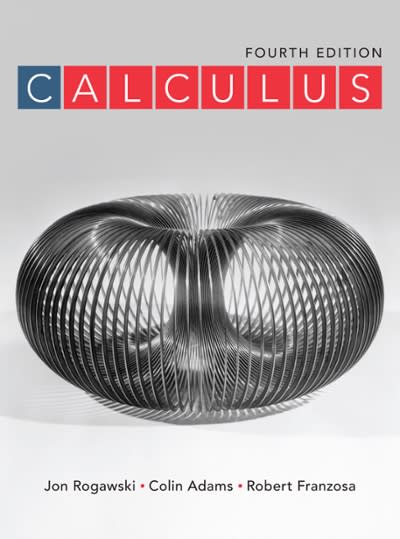Let (mathbf{F}=langle P, Q, Rangle) be a vector field defined on (mathbf{R}^{3}) such that (operatorname{div}(mathbf{F})=0). Use the
Question:
Let \(\mathbf{F}=\langle P, Q, Rangle\) be a vector field defined on \(\mathbf{R}^{3}\) such that \(\operatorname{div}(\mathbf{F})=0\). Use the following steps to show that \(\mathbf{F}\) has a vector potential.
(a) Let \(\mathbf{A}=\langle f, 0, gangle\). Show that
\[
\operatorname{curl}(\mathbf{A})=\left\langle\frac{\partial g}{\partial y}, \frac{\partial f}{\partial z}-\frac{\partial g}{\partial x},-\frac{\partial f}{\partial y}ightangle
\]
(b) Fix any value \(y_{0}\) and show that if we define
\[
\begin{aligned}
& f(x, y, z)=-\int_{y_{0}}^{y} R(x, t, z) d t+\alpha(x, z) \\
& g(x, y, z)=\int_{y_{0}}^{y} P(x, t, z) d t+\beta(x, z)
\end{aligned}
\]
where \(\alpha\) and \(\beta\) are any functions of \(x\) and \(z\), then \(\partial g / \partial y=P\) and \(-\partial f / \partial y=R\).
(c) It remains for us to show that \(\alpha\) and \(\beta\) can be chosen so \(Q=\partial f / \partial z-\partial g / \partial x\). Verify that the following choice works (for any choice of \(z_{0}\) ):
\[
\alpha(x, z)=\int_{z_{0}}^{z} Q\left(x, y_{0}, tight) d t, \quad \beta(x, z)=0
\]
You will need to use the relation \(\operatorname{div}(\mathbf{F})=0\).
Step by Step Answer:






